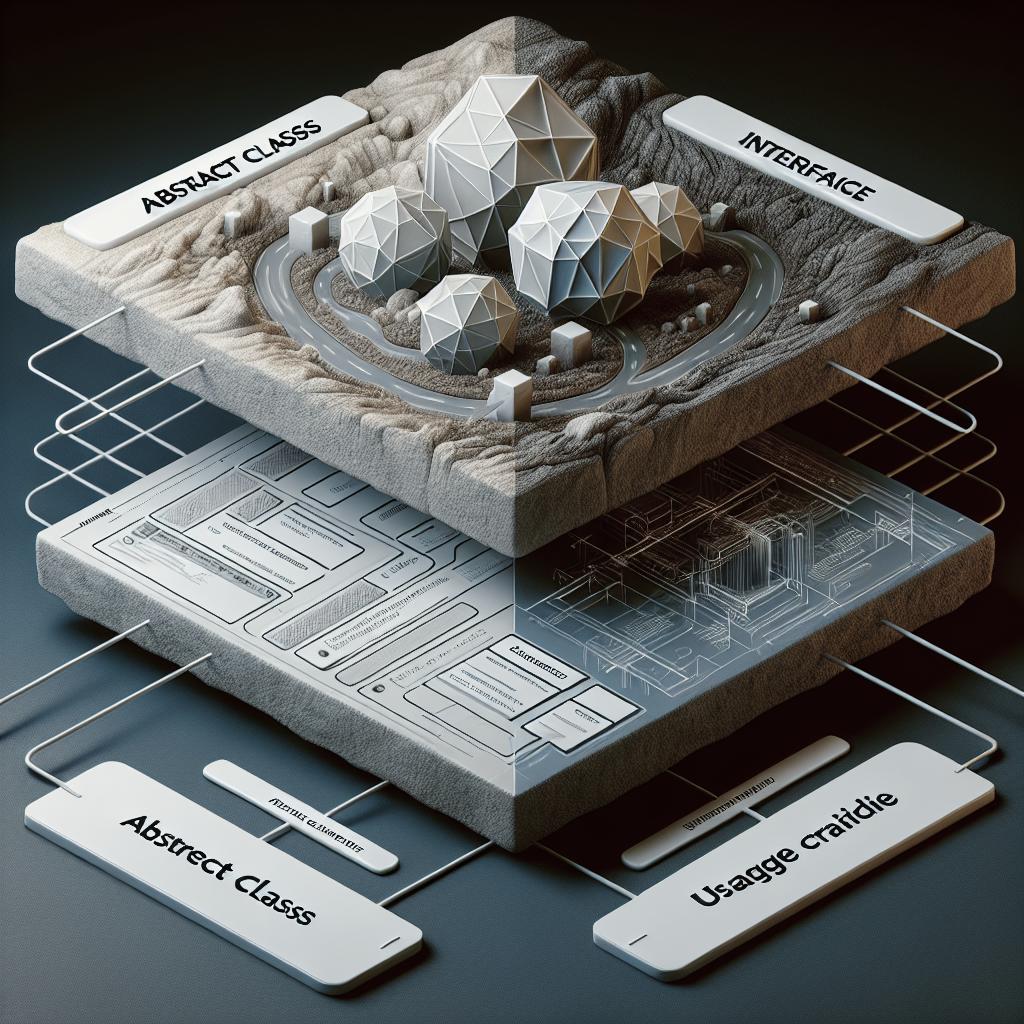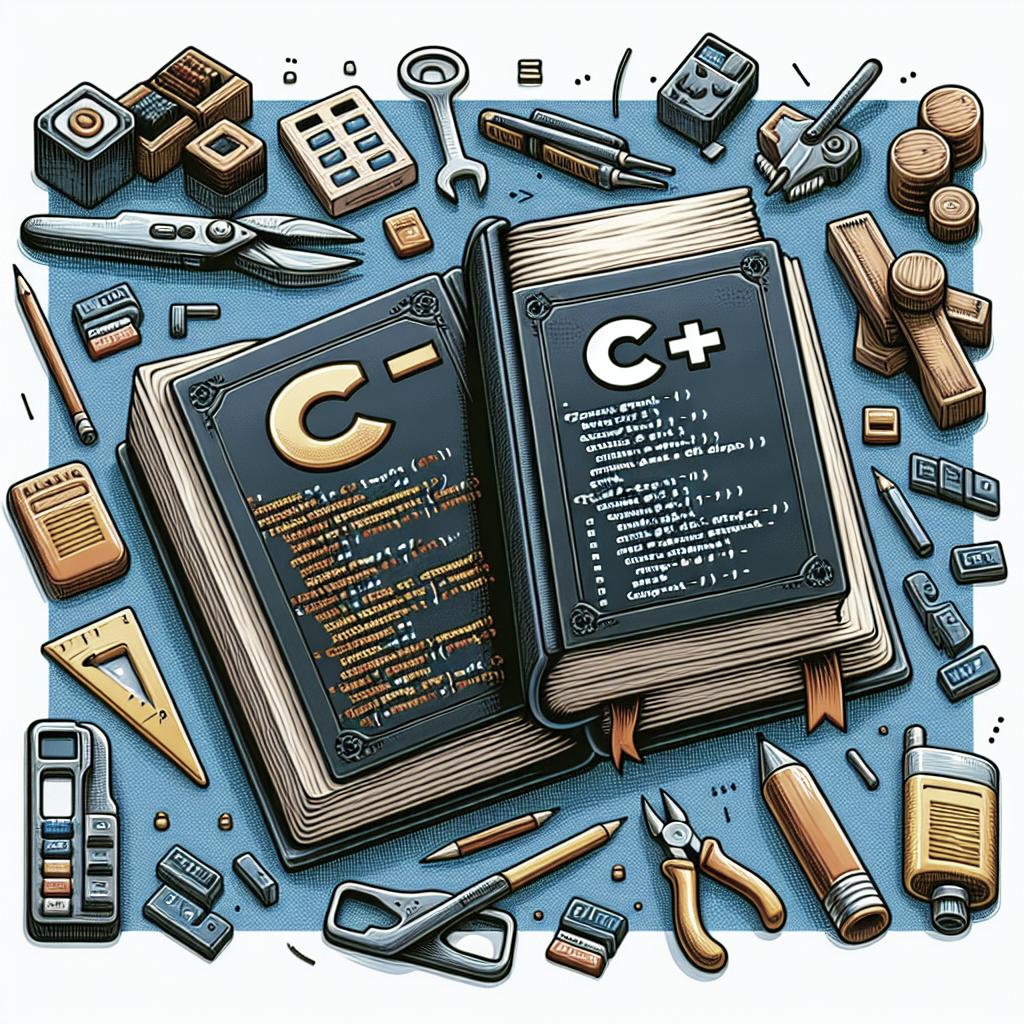html
Understanding the Differences Between Abstract Classes and Interfaces in Java
Java, a powerful object-oriented programming language, provides developers with multiple tools to enhance code functionality, among which abstract classes and interfaces play significant roles. While both are used to achieve abstraction, they have unique characteristics and serve different purposes. This blog explores their differences, diving deep into their definitions, implementation mechanisms, and usage scenarios. Additionally, it covers the basics of Java, offering insights into variables, operators, packages, and more to build a comprehensive understanding. By the end, you’ll have a clear perspective on when to choose an abstract class over an interface and vice versa, helping you make informed design decisions in your next Java project.
Basics of Java
Java is a versatile and platform-independent programming language designed to have as few implementation dependencies as possible. Created in 1995 by Sun Microsystems, Java follows the principle of “write once, run anywhere,” meaning compiled Java code can run on any platform that supports Java without recompilation. As an object-oriented language, Java encourages the use of classes and objects, facilitating modular and reusable code.
The Java ecosystem includes a rich set of libraries and frameworks that enhance the productivity and capabilities of developers. From small-scale applications to enterprise-level systems, Java provides the necessary tools to structure complex software in an efficient manner. By understanding the foundational concepts of Java, developers can take full advantage of its features and capabilities.
Variables & DataTypes in Java
Variables in Java act as containers that hold data values, and they are crucial for storing information that can be used and manipulated throughout a program. Java variables are strong-typed, meaning each variable must have a data type, which defines the kind of data the variable can store. Common primitive data types in Java include int, double, float, char, and boolean.
For more complex data structures, Java offers reference data types, such as arrays, classes, and interfaces. Understanding data types and their memory implications is essential for effective Java programming, allowing developers to optimize performance and ensure data integrity.
Operators in Java
Operators in Java are special symbols that perform operations on variables and values. Java supports various types of operators, such as arithmetic, relational, logical, bitwise, and assignment operators, each serving specific purposes in program operations.
Using operators efficiently allows developers to manipulate data and variables to achieve desired outcomes. By mastering the various operators and their usage, programmers can write more concise and effective code, optimizing both performance and readability.
Packages in Java
Java packages are used to group related classes and interfaces, providing a structured namespace management system. By organizing classes into packages, developers can avoid name conflicts and promote code reuse. This structure also enhances readability and maintainability by providing a logical arrangement of program components.
Implementing packages is a vital part of Java development, as it directly influences the build process and deployment of Java applications. Understanding and utilizing packages effectively enhances code organization and clarity, making maintenance and collaboration easier.
Flow Control in Java
Flow control statements in Java dictate the order in which code execution takes place. These statements include conditionals, such as if-else and switch-case, and control structures, like loops and jump statements. They are essential for creating dynamic and responsive applications that can adapt to various run-time scenarios.
By mastering flow control, developers can implement sophisticated logic that handles real-world applications’ variability and complexity. This ability is crucial for crafting robust software that delivers consistent performance across diverse inputs and conditions.
Loops in Java
Loops are fundamental constructs in Java, used to repeat blocks of code based on specific conditions. Common loop types include for, while, and do-while loops, each offering different capabilities for iteration. Loops help reduce redundancy and make programs more concise and efficient.
Understanding when and how to use different types of loops is vital for writing effective Java code. Proper loop implementation saves time and resources, ensuring the application performs tasks optimally and accurately processes large datasets.
Jump Statements in Java
Jump statements in Java, such as break, continue, and return, provide control over the flow of execution by altering loop iteration or exits. They empower developers to manage program execution effectively, allowing the creation of more flexible and responsive applications.
By correctly applying jump statements, developers can enhance control structures, improve code clarity, and prevent common pitfalls like infinite loops, thereby ensuring that the program executes as intended.
Arrays in Java
Arrays are data structures in Java that hold a fixed-size sequence of elements of the same type. They are useful for storing collections of data in a linear fashion. Java arrays are zero-indexed, meaning the first element is accessed with index 0.
Effectively using arrays allows developers to process sets of data efficiently, performing operations like searching, sorting, and iterating with ease. Arrays contribute to efficient memory usage and performance optimization in Java applications.
Strings in Java
Strings in Java are instances of the String class and are used to represent sequences of characters. Strings are immutable, which means once created, the contents cannot be modified. Java includes an extensive set of string manipulation methods, allowing developers to perform operations like concatenation, comparison, and substring extraction.
Understanding and effectively utilizing strings is vital for Java developers, as strings are often used to handle textual data and user input. By mastering string operations, developers can create robust applications that efficiently handle and process text.
OOPS in Java
Object-Oriented Programming System (OOPS) is a paradigm that facilitates program organization around objects rather than functions. In Java, OOPS principles, such as inheritance, encapsulation, polymorphism, and abstraction, are fundamental for creating modular, scalable, and maintainable code.
OOPS encourages reusability and flexibility, allowing developers to build complex systems with clear interfaces and adaptable components. By adhering to OOPS principles, Java developers can design robust applications that sustain changes and extensions with minimal impact.
Abstract Class in Java
1. Definition:
An abstract class in Java is a class that cannot be instantiated directly but can be subclassed. It may contain abstract methods (methods without a body) that must be implemented by subclasses, as well as concrete methods (methods with a body).
Abstract classes are used to define a common interface for a set of related classes, sharing code among them and allowing code reuse. They act as a blueprint for other classes, specifying methods that must be implemented while providing the flexibility to implement shared behavior.
2. Method Implementation:
In an abstract class, method implementation is optional; an abstract method only declares a signature, and subclasses override it to provide specific implementations. Concrete methods within an abstract class can be used directly by subclasses, promoting reusability.
This mix of abstract and concrete methods differs from interfaces (prior to Java 8) and provides a foundation for classes with common behavior while delegating specific behavior to subclasses.
3. Variables:
Abstract classes can have instance variables, allowing subclasses to share data fields that are common across all classes in a hierarchy. These variables can be protected or private, providing a degree of encapsulation.
Using instance variables in abstract classes helps manage shared state and behaviors, facilitating consistency and reducing redundancy in code implementation.
4. Constructors:
Abstract classes can have constructors, and these constructors are invoked when a concrete subclass is instantiated. While abstract classes cannot be instantiated directly, their constructors can be used to initialize common instance variables during subclass instantiation.
By having constructors in abstract classes, developers can ensure essential setup is performed automatically, reducing errors and enforcing consistency across subclasses.
Interface in Java
1. Definition:
An interface in Java is a reference type used to define a collection of abstract methods and constants. A class implementing an interface must provide specific implementations for all abstract methods declared within the interface unless the class is abstract itself.
Interfaces are central to Java’s multiple inheritance feature, enabling a class to implement multiple interfaces, thereby adhering to multiple contracts or roles defined by those interfaces. This capability enhances flexibility and modularity in application design.
2. Method Implementation:
Interfaces declare abstract methods, providing no implementation. However, since Java 8, interfaces can also contain default and static methods with implementations, offering more versatility in method definition.
This ability to have default methods allows interfaces to evolve without breaking existing implementations, promoting backward compatibility and encouraging new behavior without disrupting existing codebases.
3. Variables:
Interface variables are implicitly public, static, and final, meaning they are constants that cannot be altered. These variables provide fixed values that can be shared across multiple implementing classes consistently and can be accessed without creating an instance of the interface.
This characteristic enforces uniform use of constant values across different classes, reducing duplication and potential discrepancies.
Difference Between Abstract Class and Interface
Abstract classes and interfaces both serve the purpose of achieving abstraction in Java, yet they differ significantly in structure and use cases. One of the primary differences lies in their method definition capabilities: abstract classes can have a mix of abstract and concrete methods, whereas interfaces traditionally contain only abstract methods (until Java 8 introduced default methods).
Furthermore, abstract classes allow access to shared class-level properties and fields, but interfaces rely on constants that are public, static, and final. This fundamentally affects how state is managed across classes implementing these constructs, influencing design decisions based on state sharing needs.
Abstract class vs Interface
Features of an Abstract Class in Java
Abstract classes can provide partial implementations, which help in reducing code duplication and simplifying subclasses by inheriting common behavior. They can also encapsulate state through instance variables that subclasses share, allowing for consistent behavior and common data usage.
Being able to define constructors in abstract classes makes initialization consistent across derived classes, as fundamental setup steps are handled transparently, benefiting maintainability and reliability of the application.
Features of an Interface in Java
Interfaces in Java facilitate a form of multiple inheritance by allowing a class to extend several interfaces, overcoming the single inheritance limitations of classes. They define a contractual obligation, ensuring that all implementing classes adhere to predefined methods and behavior patterns.
The role of interfaces has grown with the ability to define default methods, enhancing interfaces’ flexibility and enabling continuous evolution without affecting existing implementations.
When to use what?
Choosing between an abstract class and an interface depends on the specific needs of your codebase. If you require shared behavior that can also have state, an abstract class might be more suitable. It allows putting related methods and state into one class, maximizing reuse and minimizing redundancy.
On the other hand, if you need to define a contract across completely different classes or need multiple inheritance features, interfaces should be the go-to choice. The presence of default methods means you can introduce additional functionality progressively without altering all implementations immediately.
Summary
Understanding the distinctions and applications of abstract classes and interfaces is crucial in Java programming. Abstract classes allow developers to create foundational classes with shared behaviors, while interfaces define behavioral contracts across disparate class hierarchies. Both constructs are integral to robust software development, each optimizing different aspects of object-oriented design.
Choosing between them involves evaluating design goals, existing architecture, and the specific roles of classes within your application.
Similar Reads
- Understanding Inheritance in Java
- Best Practices for Java Developers
- Java 8 and Beyond: Evolution of Interfaces
Final Thoughts
| Aspect | Abstract Class | Interface |
|---|---|---|
| Instantiation | Cannot be instantiated, only subclassed | Cannot be instantiated, only implemented |
| Methods | Can have both abstract and concrete methods | Initially only abstract (Java 8 adds default and static methods) |
| Variables | Can have instance variables | Cannot have variables, only constants |
| Inheritance | Single inheritance, can extend another class | Supports multiple inheritance |
| Use Case | Shared state and behavior | Define common behavior contracts |


